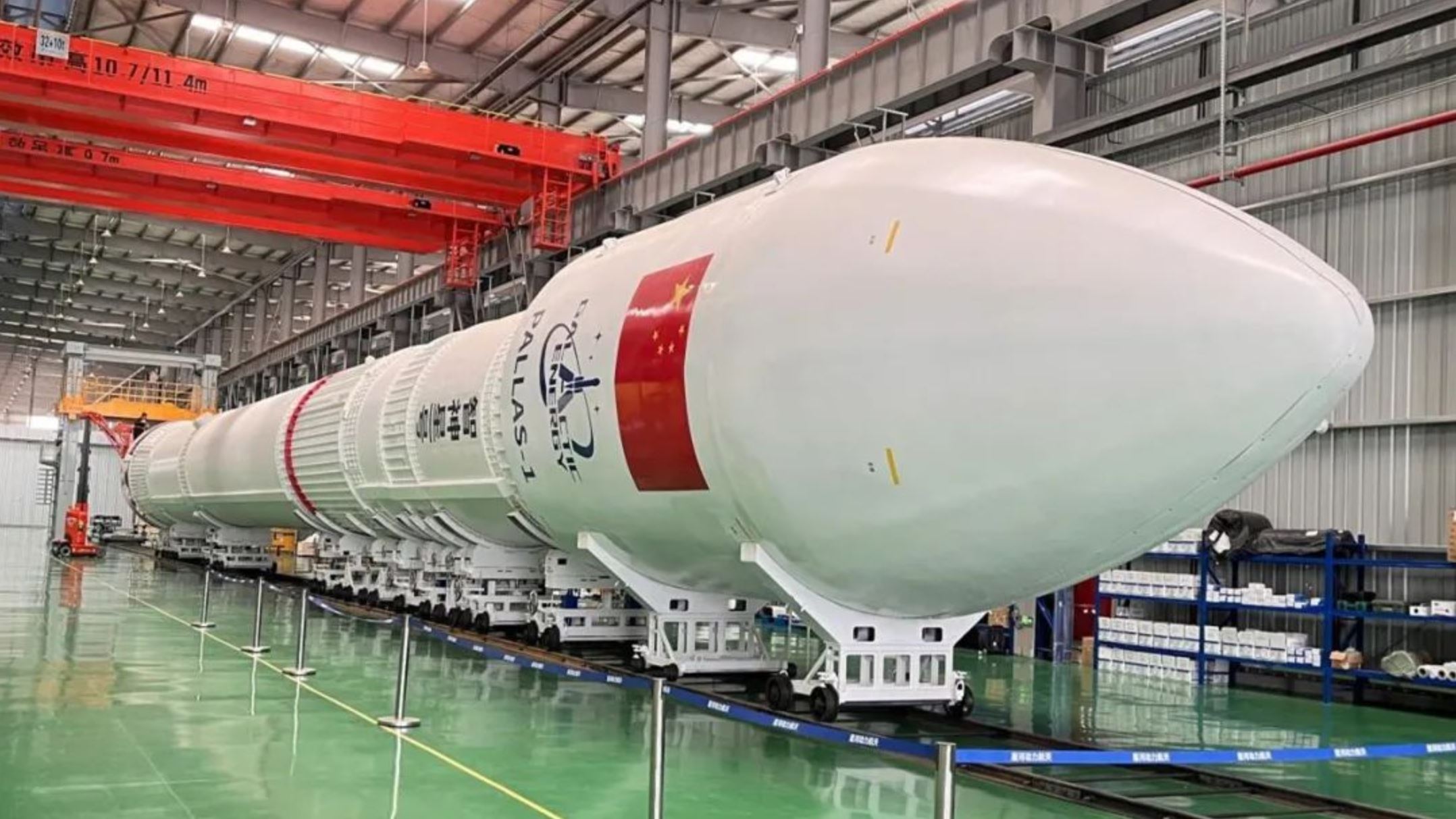Chinese launch startup tests landing rockets with jet-powered prototype
Galactic Energy plans to launch the reusable Pallas 1 rocket in 2024.

A Chinese startup is taking jet-powered steps to landing and reusing rockets.
Chinese commercial launch company Galactic Energy announced in late July that it had recently used a small test article propelled by a jet engine to test guidance software for landing rockets.
The trajectory deviation, landing point deviation, attitude deviation and other indicators all met the design requirements, according to a Galactic Energy statement.
The "Firebird-1" vehicle used for the flight is a small technology verification platform. The company is working towards a "hop test" with Firebird-6 which will be powered by a kerosene-liquid oxygen engine.
Related: Chinese company's rocket launches 3 satellites into orbit
Galactic Energy have been busy. Here's a recent hop test with Firebird-1, a jet engine-powered article for testing vertical landing. Firebird-6 will be a rocket powered test next year. Tests are part of development of Pallas-1 kerolox reusable launcher. https://t.co/eEzn7kcJWM pic.twitter.com/vR7lsH2naOJuly 25, 2023
The tests are part of the plan to make the company's upcoming Pallas 1 rocket reusable. Galactic Energy is targeting a first test flight of Pallas 1 next year. The rocket is designed to be capable of carrying 11,000 pounds (5,000 kilograms) of payload to low Earth orbit.
The first launch will be expendable, but the firm plans to make the rocket capable of being recovered by a Falcon 9-like vertical landing in 2025.
Get the Space.com Newsletter
Breaking space news, the latest updates on rocket launches, skywatching events and more!
Galactic Energy is one of a number of Chinese launch startups and is one of its most successful, having succeeded with all six of its launches of its Ceres 1 small solid rocket.
China has yet to develop a reusable rocket. Only the U.S. companies SpaceX (orbital) and Blue Origin (suborbital) have so far managed to land and reuse rockets. But Galactic Energy and Chinese counterparts Landspace (with the Zhuque 2 rocket), iSpace (Hyperbola 2), Deep Blue Aerospace (Nebula 1) CAS Space (Lijian rockets) and Space Pioneer (Tianlong 3) are all developing reusable launch vehicles.
Join our Space Forums to keep talking space on the latest missions, night sky and more! And if you have a news tip, correction or comment, let us know at: community@space.com.

Andrew is a freelance space journalist with a focus on reporting on China's rapidly growing space sector. He began writing for Space.com in 2019 and writes for SpaceNews, IEEE Spectrum, National Geographic, Sky & Telescope, New Scientist and others. Andrew first caught the space bug when, as a youngster, he saw Voyager images of other worlds in our solar system for the first time. Away from space, Andrew enjoys trail running in the forests of Finland. You can follow him on Twitter @AJ_FI.









